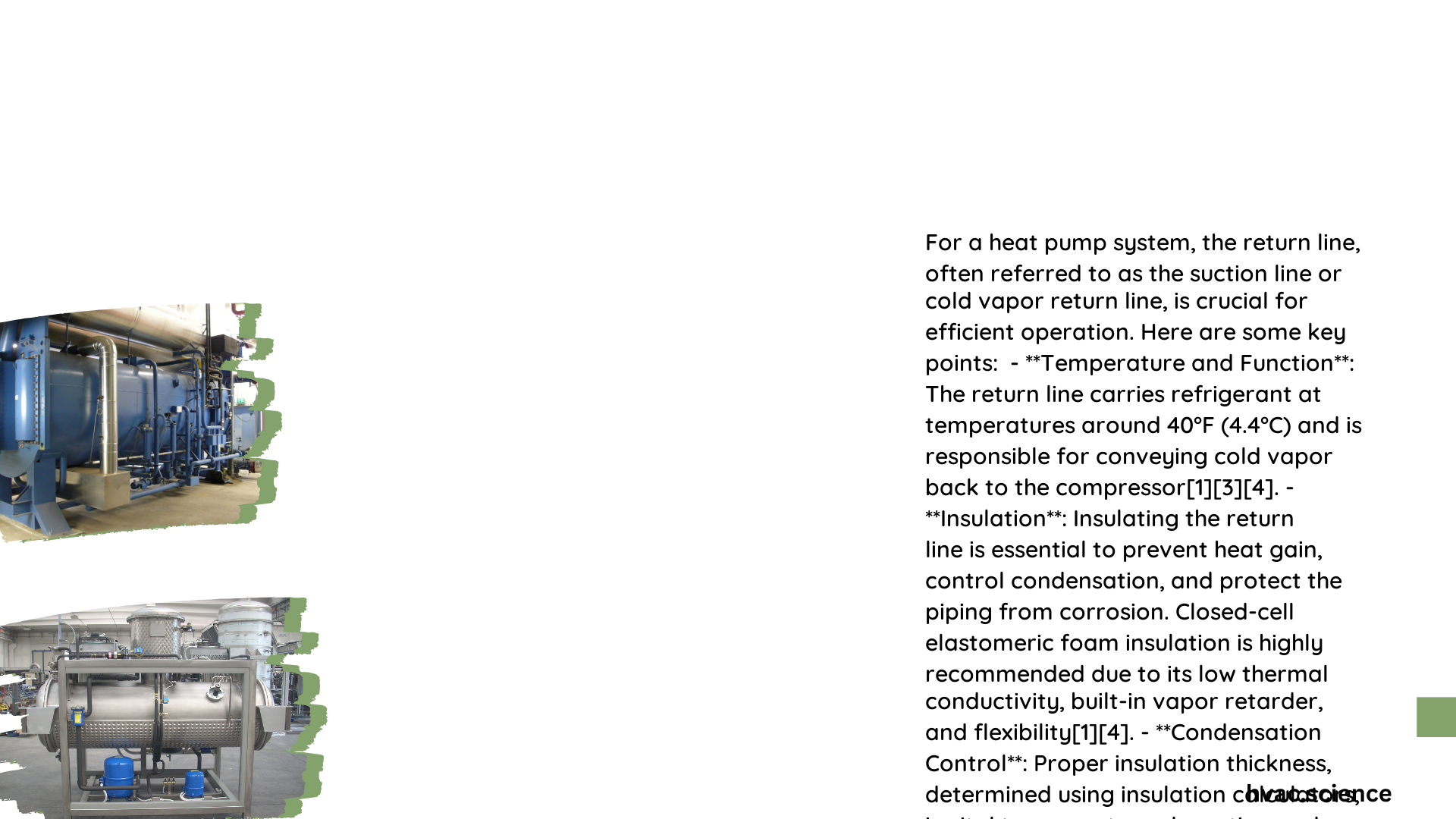The heat pump return line, also known as the suction line, is a critical component of the refrigerant line set in heat pump systems. It plays a crucial role in transporting refrigerant back to the compressor, ensuring efficient operation and optimal performance. Proper installation, maintenance, and troubleshooting of the heat pump return line are essential for the longevity and effectiveness of the entire heat pump system.
What Are the Key Components of a Heat Pump Return Line?
The heat pump return line consists of several important components:
- Copper tubing
- Insulation
- Fittings and connections
- Service valves
These components work together to ensure the smooth flow of refrigerant and maintain system efficiency.
How to Properly Install a Heat Pump Return Line?

Proper installation of a heat pump return line is crucial for optimal system performance. Here are the key steps:
- Sizing the line correctly
- Insulating the entire length
- Protecting from physical damage
- Sealing penetrations
- Brazing connections
Sizing the Line
The return line must be sized according to the manufacturer’s specifications. Typically, it’s the larger of the two copper lines in the refrigerant line set. Correct sizing ensures:
- Adequate oil return to the compressor
- Proper refrigerant flow
- Optimal system efficiency
Use the manufacturer’s sizing tables to determine the correct diameter based on the heat pump’s capacity and line length.
Insulation Requirements
Proper insulation of the heat pump return line is critical. Here’s why:
- Prevents condensation
- Reduces energy loss
- Protects against temperature fluctuations
| Insulation Type | R-Value | Recommended Use |
|---|---|---|
| Foam | R-4 to R-8 | Standard installations |
| Rubber | R-3 to R-6 | Flexible, good for tight spaces |
| Fiberglass | R-2.2 to R-4.3 | High-temperature applications |
Choose insulation that covers the entire length of the line and meets or exceeds the manufacturer’s R-value recommendations.
Protection Measures
To protect the heat pump return line:
- Use a rigid cover for outdoor portions
- Apply UV-resistant tape on exposed insulation
- Install rodent-proof sleeves at building penetrations
- Seal all penetrations with insulating foam or sealant
These measures prevent damage from physical impacts, UV radiation, and pests.
What Are Common Issues with Heat Pump Return Lines?
Heat pump return lines can experience several issues that affect system performance:
- Leaks
- Kinks
- Inadequate insulation
- Blockages
Identifying Leaks
Leaks in the heat pump return line can lead to refrigerant loss and reduced efficiency. To detect leaks:
- Use an electronic leak detector
- Apply soapy water to connections and look for bubbles
- Check for oil stains around fittings
Prompt repair of leaks is essential to maintain system performance and prevent environmental damage.
Dealing with Kinks
Kinks in the return line can restrict refrigerant flow. To address this issue:
- Locate the kink by feeling for hot spots along the line
- If possible, gently straighten the kinked section
- If the kink is severe, replace the affected portion of the line
Preventing kinks during installation is crucial. Always use proper bending techniques and avoid sharp turns.
How to Maintain a Heat Pump Return Line?
Regular maintenance of the heat pump return line ensures long-term reliability. Here’s a maintenance checklist:
- [ ] Inspect insulation for damage or deterioration
- [ ] Check for signs of leaks or oil stains
- [ ] Verify that protective coverings are intact
- [ ] Ensure all penetrations remain properly sealed
- [ ] Clean debris from around the outdoor unit
Perform these checks at least annually, ideally before the heating or cooling season begins.
What Tools Are Needed for Heat Pump Return Line Work?
Working on heat pump return lines requires specific tools:
- Tubing cutter
- Flaring tool
- Torque wrench
- Vacuum pump
- Refrigerant gauge set
- Brazing torch and rods
Having the right tools ensures proper installation and maintenance, reducing the risk of leaks and other issues.
How to Troubleshoot Heat Pump Return Line Problems?
When troubleshooting heat pump return line issues, follow these steps:
- Check system pressure readings
- Inspect for visible damage or kinks
- Verify proper insulation
- Test for leaks using appropriate methods
- Measure superheat and subcooling values
If you encounter complex issues, it’s best to consult a professional HVAC technician for accurate diagnosis and repair.
What Are the Best Practices for Heat Pump Return Line Installation?
To ensure optimal performance of your heat pump return line:
- Always follow manufacturer guidelines
- Use high-quality materials and proper insulation
- Ensure correct line sizing for the system capacity
- Properly secure and protect the line from physical damage
- Perform thorough leak testing before system startup
- Document all installation details for future reference
Adhering to these best practices will help maximize the efficiency and lifespan of your heat pump system.
By understanding the importance of the heat pump return line and following proper installation, maintenance, and troubleshooting procedures, you can ensure your heat pump system operates at peak efficiency for years to come.
References:
1. [https://indoortemp.com/resources/heat-pump-system-installation-process]
2. [https://slipstreaminc.org/sites/default/files/documents/downloads/001064_ASHPInstalllationGuide_ADA%20web.pdf]
3. [https://neep.org/sites/default/files/resources/InstallingASHPinCold_edits.pdf]
